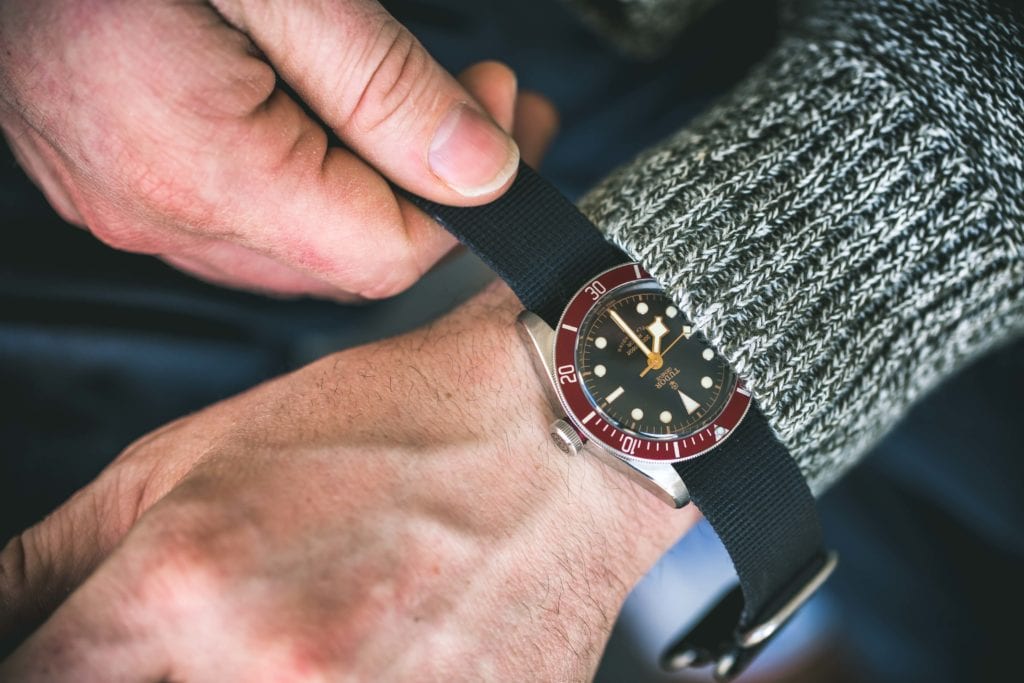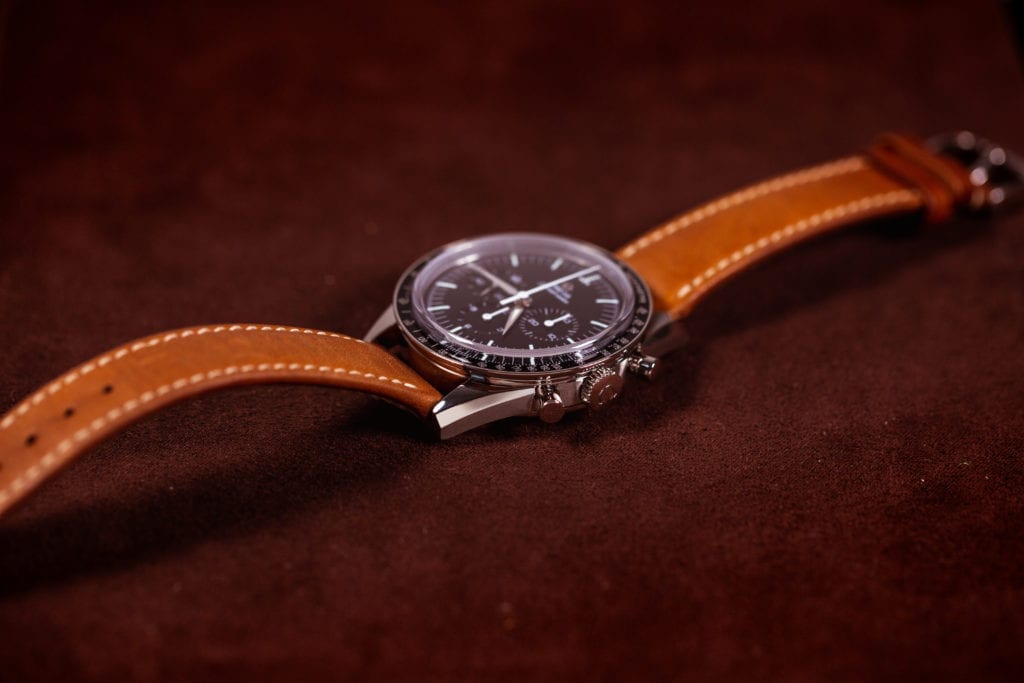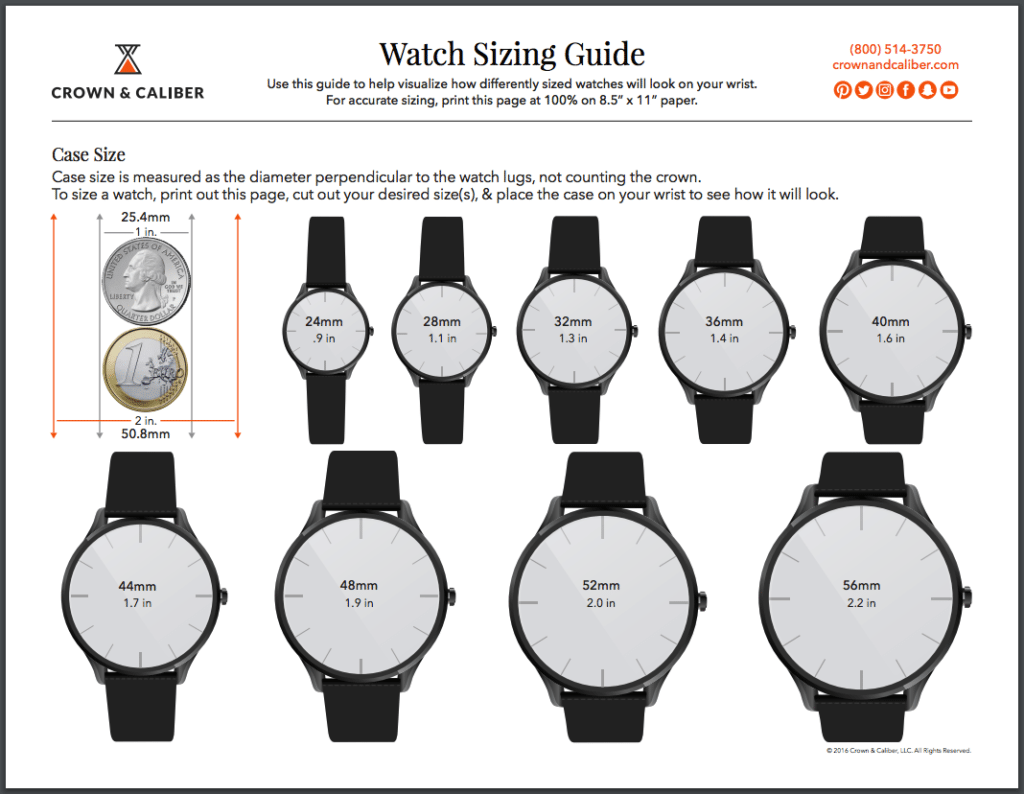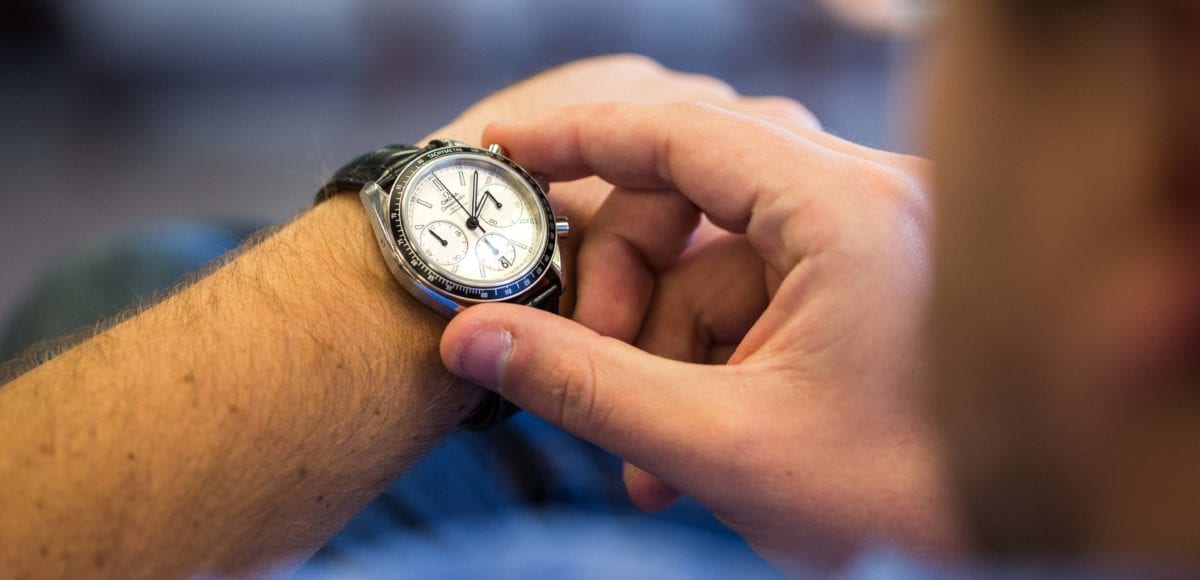Almost every watch comes with a relatively similar makeup – a band, a case, a crown. However, little nuances make watches appear and watch size seem vastly different. The band can be a metal bracelet or leather strap. The case can be square or round. The crown may be flanked by pushers or stand alone. These are just a handful of watch styles, but the options are endless.
The fact that watches come in all shapes and sizes is part of what makes them great. Just like those who wear them, each watch is unique. However, when it comes to watch size and fit, not all watches are going to look best on you. Certain watches lend themselves to a particular wrist size or stature. It’s also important for you to know that no two watches are going to look the same on your wrist, even if they’re the same size.
Beyond style and price, size is one of the most important factors when buying a watch. Watch size is also multifaceted. It doesn’t just include the case size. It also includes the thickness, the bracelet fit, and the general look and feel on your wrist.
Watch Sizing Trends
You’ll notice that many vintage watches are relatively modest in size by modern standards. In the mid-20th century, the average men’s case size was around 36mm. At that time, a watch measuring 38mm would have been oversized. In more recent years, watch sizes have ballooned. Today, a 38mm men’s watch is relatively standard, and oversized watches measure upwards of 45mm. All of this is to say, watch sizes go through trends. That’s why it’s imperative to know which sizes look best on you.
Case Width
The most obvious indication of a watch’s size is the case width. Traditionally, the case measurement is from the nine to the three o’clock position, excluding the crown. If you have a smaller wrist, a watch measuring 40mm or larger may be too wide for you. On the other hand, if you have a bigger wrist, a watch measuring 36mm might look too small. A good way to check whether a watch is too big is to look at the lugs. If they reach past the curve of your wrist, the watch may not be the right fit. However, there are no hard and fast rules when it comes to watch sizing. At the end of the day, a watch is a highly personal item. What matters most is how it looks and feels to you.

Case Thickness
Case thickness is another element that can really affect how a watch sits on your wrist. In general, a thicker watch will appear larger and bulkier. It will sit higher and have a more prominent presence on the wrist. It will likely be heavier as well, which is another factor to consider. You might also want to think about whether you need your watch to fit under your shirt cuff. If that’s the case, a thicker watch may not be the best choice for you.
Usually, case thickness is directly proportional to the case width. For instance, a watch measuring 40-42mm will typically be about 7mm thick. Alternatively, a watch measuring 44mm and up will typically be around 9mm thick. Again, this is not an absolute rule. There are other factors besides case width that impact the thickness. For example, the more complications a watch has, the thicker it will likely be.

Band Thickness
The average male wrist size is about 7.5 inches. Most watch bands will easily fit anyone. However, if you have an especially large or small wrist, you might want to consider your band when choosing the right watch for you. For instance, if you have a thicker wrist, you might have to buy extra links for the bracelet. If you prefer a strap, you may haveto opt for a longer one. Likewise, for a smaller wrist, you’ll likely have to remove some links or make a new hole in the strap. For a more in-depth guide on how your bracelet or strap should fit, click here.
Measuring for Size
There are no definitive rules you have to adhere to when it comes to choosing your watch size. These are merely guidelines to help you select the best possible fit for your unique proportions and preferences. We always say, wear the watch you want.
However, if you want to accurately measure your wrist and determine the best sizing for you, we’ve created a dedicated portion of our site to Watch 101. Here, you’ll find a watch sizing guide as well as a video outlining how to choose a case size. In addition, we’ve created a printable guide to help. It includes references for all your watch sizing needs: case width, case thickness, and strap length. Plus, it gives you an easy way to measure your wrist size. Download and print it out here.

Editor’s Note: This article was originally published on December 16, 2013. We have updated it in June of 2019 for clarity and comprehensiveness.
Get More Articles Like This in Your Inbox
We're constantly creating great content like this. So, why not get it delivered directly to your inbox? By subscribing you agree to our Privacy Policy but you can unsubscribe at any time.






